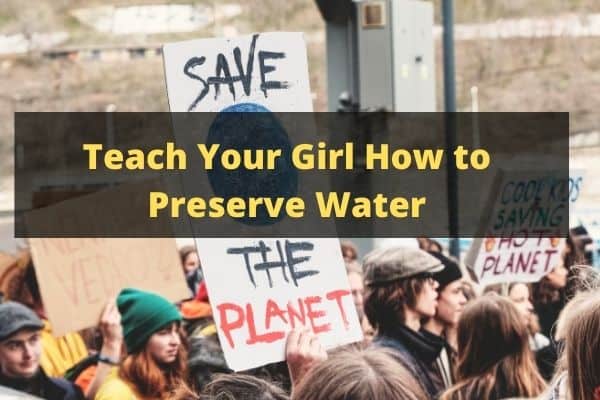Water conservation is a topic that not a lot of people understand the importance of. The idea that it’s something that we could potentially run out of seems absurd when you consider how much water there actually is on the planet.
Far more of the Earth’s surface is covered in water than isn’t covered in water and so it seems like we should always be a supply of it. That’s not necessarily the case though. Most of the water on the planet you would find in the ocean.
This means that it’s salt water, which isn’t really good for drinking, cleaning or anything else that we need water for. Freshwater makes up about 3% of all the water in the world and only about 0.5% of that is actually drinkable.
Most of us in first-world countries take clean water for granted, but in a huge chunk of the world it’s not. And as we start to deal with the ever-growing threat of climate change, there will be more of us struggling to maintain our access to it.
And so, water conservation is very important and it will continue to be very important going forward. It can help us to avoid droughts and shortages, prevent rising costs and allow for more water to be available for recreational use.

It’s very important that we teach our kids about the importance of this too. So for those science-loving girls out there, here’s three fun projects that will help to teach them how to conserve water.
1. Water-Wise Gardening
Gardening is a really fun hobby for all ages and it has numerous benefits. It’s active, it’s outdoors, it teaches about patience and responsibility, and it can also help kids to learn a bit more about nature.
Specifically, about water’s relationship to nature. Because plants are also an essential part of our ecosystem, but growing our own means using water. And if you have a large garden of plants that require maintenance, you’re going to need a lot of water.
So what you can do instead, is set up a garden that is water-wise, and that primarily uses drought-resistant plants. These are plants which are usually native to drier climates such as the Mediterannean, but they can thrive in your garden too.
These plants are still fun to grow and learn about and they can give your garden a beautiful and tropical look, but they don’t require that much water. This makes them a great way for girls to learn about the process of absorbing water and how it differs from plant to plant.
Water conservation in our gardens might not be the most effective step, but because plants are important and water is an important aspect, this will be a contributor and a fun science project too.
2. Leak Detecting
Teach a child how to detect leaks around the house and you may not even need a plumber! Okay, that’s an exaggeration but leaky pipes around the house is something that a lot of people do have to deal with on a regular basis.
Again, having a leak might not seem like it would make a huge dent, but if you have numerous untended leaks around your house for a long period of time, the amount of water that is wasted will start to add up.
For things like showerheads and faucets, it’s as simple as just examining them and seeing if there is any excess water coming out. Checking the toilet is a bigger and more fun job, and also the more important one because it’s more difficult to detect.
A leaky toilet could waste gallons and gallons of water over time so teach your child about using food colouring. What they need to do is put about ten drops of food colouring into the toilet tank, wait 20 minutes and then check the bowl.
If the water in the bowl shows any of the colour, then you have a leak! Teaching your little girl about leak detection can make her feel like a real-life Nancy Drew.
3. Water Footprint
We’ve all heard about your carbon footprint which is an important thing to be aware of when it comes to the fight against climate change, but you should also learn about your water footprint too.
There are a few things which contribute to it. The amount of time you spend in the shower will, for most people, be the largest chunk of water that they use on a daily basis. There’s also how much you let the water run when you’re brushing your teeth.
Washing clothes is another thing, and then there is also your drinking water. Fueling the demand for bottled water in a country which should be able to supply the necessary amount of drinking water without bottling so much of it is a step in the wrong direction.
So investing in a portable water filter and using that to filter your tap water instead of buying enough bottled water to suffice for every single day will help to reduce your water footprint and aid in conservation.
Introduce your daughter to this water footprint calculator. It’s easy to use and it will give you an accurate reading of your family’s footprint.
Girls who are interested in science will find the connection between water conservation and climate change fascinating, and by doing these fun and educational projects you can ensure that it’s something they take seriously going forward.
